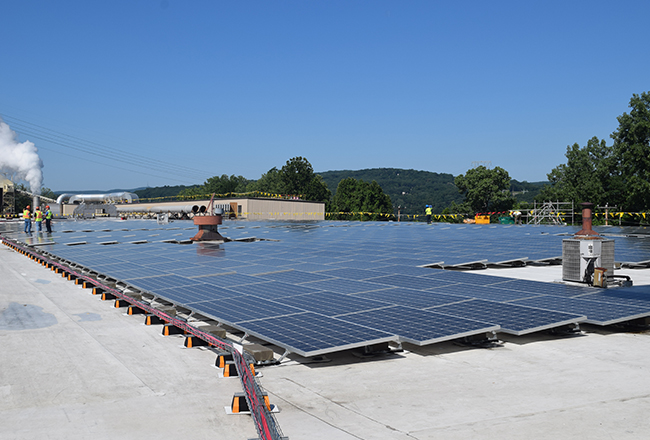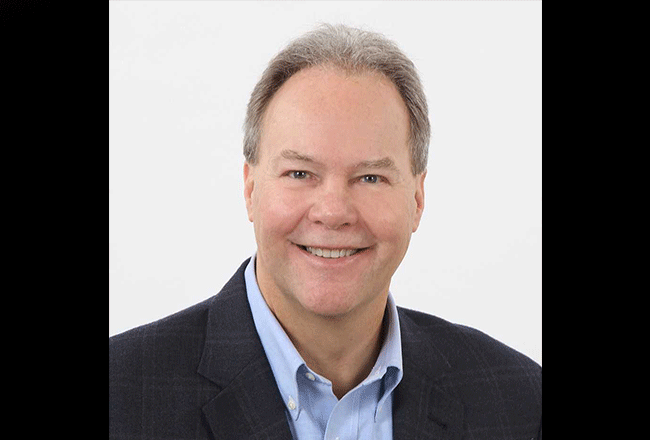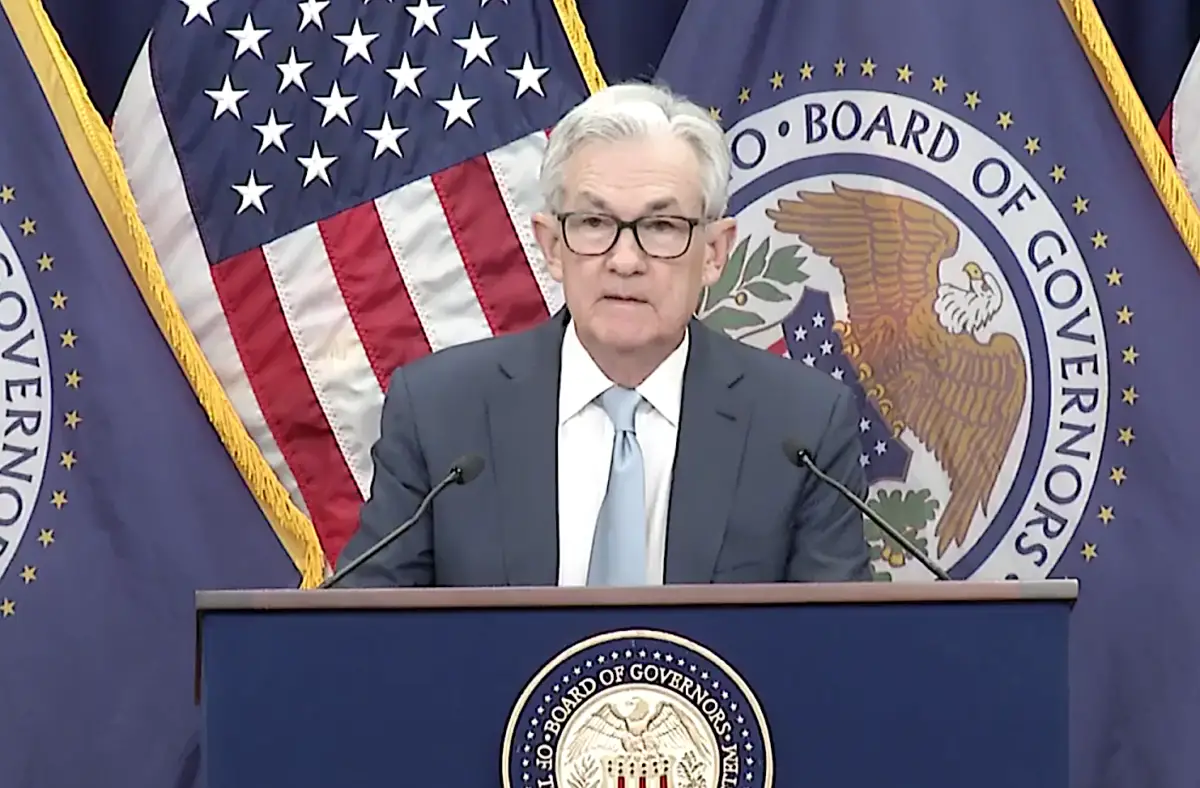
solar array. Photo by Aleesia Forni.
Just down the street from Indian Point”™s two active nuclear reactors, a manufacturing plant will generate power of its own.
Continental Building Products, working with New York City-based EnterSolar, started construction last month on what it said would be the state”™s largest rooftop solar array: a 2.4-megawatt system that will take up a 250,000-square-foot space atop the building. The array will operate as a community solar project, meaning it can offset the bills of other subscribers nearby.
Continental produces gypsum-based drywall products at the plant, which is on the Hudson River in Buchanan. The facility employs 110 people.
Continental has operated there since 2013. Before that, the plant was part of Lafarge North America. Lafarge sold off its gypsum business to a private equity firm, which launched Continental Building Products in 2013. The publicly traded Continental is based in Virginia, but has other manufacturing locations in Florida, Kentucky and Canada.
Mike Kralik, plant manager for Continental, said adding solar was a good fit for the company”™s sustainability efforts. Continental uses 99 percent recycled materials in its drywall products.
“We”™re always looking for ways to be socially responsible and give back to the community,” Kralik said. “But then at the same time, to make good business decisions. Solar seemed like the right fit for who we are as a company.”
While Continental will own the system, it will operate as a community solar array. That means that a majority of the power it produces will be available to others in the community.
“It”™s a perfect option for people who don”™t have a proper site for solar, or rent and have a shorter-term arrangement,” as explained by Peyton Boswell, managing director for EnterSolar. “You can benefit without having any physical presence on your home.”
Community solar allows people to essentially subscribe to a small portion of the power an individual solar array produces. The solar panels pump energy into the grid, which Consolidated Edison calculates and converts into solar energy credits. Those credits are then divvied up among subscribers to offset individual bills.
“The homeowners see a new line on their Con Ed bill that basically says ”˜solar savings,”™” Boswell said. “Say they have $100 of allocation that month and a $120 bill with Con Ed, they”™ll be billed for that $120 minus the $100 solar allocation, so that”™s $20 owed to Con Ed.”
That”™s not to say a customer is guaranteed to save that huge a chunk off their bill. They also have to pay back a set percentage of the energy credit to the solar array operator, typically about 90 percent.
But since the solar credit payments are always tied to the number of solar credits the array actually produces, subscribers are guaranteed to save something on their energy bills. The savings does vary season to season, however, dependent on how often the sun shines on the panels.
EnterSolar has seen its work in the region pick up over the last few years, Boswell said. The company focuses on large-scale projects for corporate clients. EnterSolar has completed projects in Westchester for companies that include Swiss Re, Regeneron and Zwilling J.A. Henckels.
“It”™s been an active area, but there are so many more large corporations in Westchester with great sites,” Boswell said. “So I”™m hoping we”™re just getting going.”
The online platform to sign up as a subscriber to the Buchanan project will launch in August, Boswell said. The array is expected to be operational in the fall. EnterSolar is partnered with TriState Solar Alliance for the project.
New York started allowing community solar projects, also referred to as community-distributed generation, in 2015. Since then, the rules governing how they operate and how their energy is credited, have evolved. But expanding community solar fits in with the state”™s overall energy vision, known as Reforming the Energy Vision (REV).
“The state, I think it”™s fair to say, is eager to see more of these community projects, particularly in Con Edison territory,” Boswell said.
A major goal of REV is to cut greenhouse gas emissions and shift 50 percent of the state”™s electricity production to renewable sources by 2030. As Indian Point prepares to shut down fully by 2021, Gov. Andrew M. Cuomo has pointed to the renewable energy initiatives as evidence that greenhouse gas emissions won”™t spike as a result of the 2,000-megawatt power gap the plant leaves behind.
Continental”™s plant may be a neighbor to the nuclear plant, but Kralik said the company”™s decision to pursue solar power was made completely separate of any concerns about Indian Point”™s planned closing.
“We would have moved forward with the project in any event,” Kralik said. “It”™s a good project that stands on its own without any other influences.”






















